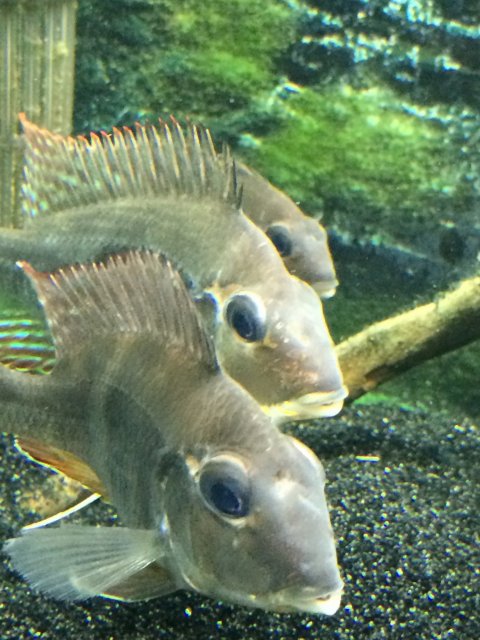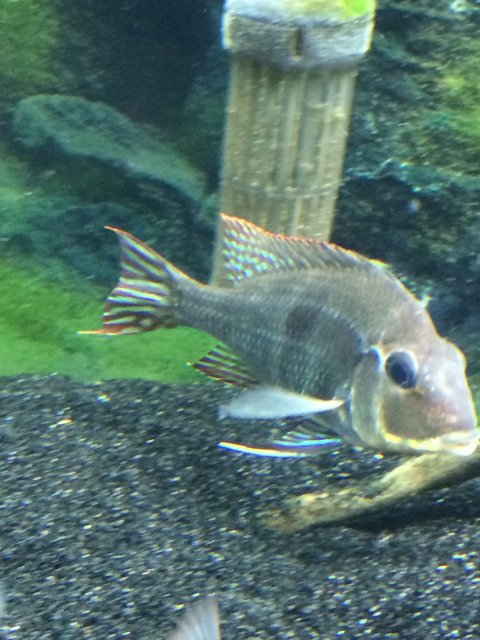Hi everyone,
Ive had these guys for months now, they're 3x the size they were when i bought them.
A few months ago i noticed that two of my largest specimens had what looks like scarring or pockmarking behind their eyes and on their foreheads.
They don't seem to mind, and they certainly don't act injured or sick; so what gives? Why are they scarred? There isn't anything in their with the teeth necessary to inflict marks like this.
I apologize for the picture quality, but my iphone doesnt take great aquarium photos and they never stop moving,
The pockmarks are behind the eyes on both specimens, and on the forehead of one of them. Its only present on my most colorful and largest specimens.




Ive had these guys for months now, they're 3x the size they were when i bought them.
A few months ago i noticed that two of my largest specimens had what looks like scarring or pockmarking behind their eyes and on their foreheads.
They don't seem to mind, and they certainly don't act injured or sick; so what gives? Why are they scarred? There isn't anything in their with the teeth necessary to inflict marks like this.
I apologize for the picture quality, but my iphone doesnt take great aquarium photos and they never stop moving,
The pockmarks are behind the eyes on both specimens, and on the forehead of one of them. Its only present on my most colorful and largest specimens.










